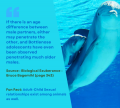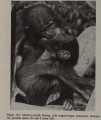One of our staff members is contributing considerably to a News Archiving service at Mu. Any well educated (Masters, PhD or above) users who wish to make comments on news sites, please contact Jim Burton directly rather than using this list, and we can work on maximising view count.
Research: Double-Taboo CSA
 | ||||||||||||
| Part of NewgonWiki's research project | ||||||||||||
|---|---|---|---|---|---|---|---|---|---|---|---|---|
|
| ||||||||||||
| ||||||||||||
|
| ||||||||||||
| Template: Research - This template |
Examples of "double-taboo" "CSA" (CSA + incest or prostitution/pornography) are often indistinguishable from other cases re. their outcomes - despite the presence of what theorists would deem to be unique exacerbatory factors, including the much-heralded "power differences". That is to say, the traumas (when they do arise) are sociogenic/iatrogenic, and are thus comparable in nature regardless of what activity the taboo relates to.
Incest has been associated with more negative outcomes in some studies (see Prevalence of Harm and Negative Outcomes, and Association or Causation), although this is likely due to lack of simple consent/greater use of force, and social factors rather than the incestuous nature of the relations per se.
Net uniformity of outcome
A variety of double-taboo/multiple-victimization formulations (including commercial exploitation, incest, etc) have been recorded within the CSA victimization category, yet there is seemingly no greater burden of trauma (when present) attached to the double-taboo/multiple-victimization. See, for example, the absence of a "biological gradient" in Association or Causation, where greater exposure to experimenter-defined "CSA" was noted without any greater harm.
This "net uniformity of outcome" is a classic red-flag for confounding social variables, suggesting that neither "CSA", nor the supposedly more severe forms of "CSA" such as sex-work/participation in pornography are fundamentally traumatic experiences per se. Similar reactions were observed in children who were chastised for, or prohibited from masturbating many decades ago, when said behavior was pathologized as "onanism". Many modern psychiatrists, if allowed to assess such children, would likely ascribe labels such as "classic trauma response" to their symptoms, which are in fact a result of social shame instilled in them by way of socialization and punishment. As we have established elsewhere in this guide, a similar mechanism is in likely effect with a (statistically insignificant) minority of voluntary "CSA".
Similarly, when different types of "sexual victimization" are compared in a controlled manner, outcomes appear to be almost identical. According to one research team, for example, "there is no evidence in this study to suggest that young people who are abused via the Internet suffer less harm than those who are abused offlline [...] notably, within this sample, whether abuse occurred online-only or both on- and offline did not correlate with the extent of the impact on the victim."[1] Finkelhor has observed that minors' experiences of the production of erotic material with an adult present, were "not higher in negative emotional impact than the [nowadays more common] youth produced images".[2]
This stands in stark contrast to other forms of victimization (physical, emotional, neglect), which are widely known to bring about, or exacerbate statistically significant negative outcomes when combined with one another. Notably, the inclusion of sex in a pairing does not tend to worsen the outcomes. See, for example, "Poly-Victimization" studies by David Finkelhor and others.
Incest (family sex)
Research would appear to suggest that there is no animal analogue for a universal incest taboo "mechanism".[3][4] But what information do we have to support the idea that such a taboo among humans is biologically potentiated? And what does the literature say about social stigma and the effects on minors?
Certainly, low level sex play, including parent-child genital play is common in many nonwestern cultures, as shown throughout Janssen's extensive 2004 work. We will soon have summarized this work and compiled a full list of historical/anthropological observations.
- Ramey, J. (1979). "Dealing with the last taboo" (SIECUS Report).
- "One such study, recently reported to the American Psychiatric Association annual meeting (Nelson, 1978), found certain “rare but undeniably healthy situations where incest was an obviously appropriate behavior.” She also found a high correlation between abuse and negatively perceived incestuous experience as well as a high correlation between consent and positively perceived incestuous experience. Contrary to her expectations, incest did not occur primarily in families with a high level of dysfunction, and where dysfunction was present it was seldom possible to attribute its cause to the incestuous character of the experience. Whenever the incest situation isolated two or more members from the rest of the family, there was guilt and negativity in the report. Whenever the participants felt they had the permission of the family, a positive report resulted. It is significant that Nelson found “several such families where real or implied consent openly allowed active, sophisticated lifestyles which included sexual sharing.” The Nelson study, the currently suppressed Kinsey study, and two others that I know of suggest that we do not have the whole picture of incest before us and are therefore not presently in a position to make valid pronouncements and judgments about the nature of the practice. As a result, we may be doing considerable damage to those who have been or are currently involved in incest. The blatant sensationalism of television, added to congressional hearings which equate incest with rape, child abuse, violence, child slavery, and child pornography, combine to scapegoat many people."
- Nelson, Joan A. (1986). "Incest: Self-Report Findings From a Nonclinical Sample," Journal of Sex Research, 22(4), 463-434.
- "In contrast to those studies documenting the damaging effects of incest, a few clinical studies reveal nondamaging incest. For example, Sloane and Karpinski (1942), using interviews from five clinical cases, stated that it was the least harmful, psychologically, for younger children with risk increasing as the subject approaches adolescence. They stated further that if a "nonparticipating adult" is comfortable with the incestuous relationship, harm to the child is decreased (p. 666). Henderson (1975) said that such relations do not always seem to have a traumatic effect and that it sometimes even "diminishes the subject's sense of psychosis and allows a better adjustment to the external world" (p. 1,537). Yorukoglu and Kemph (1966) reported minimal, if any, short term effects for one son in son-mother incest (p. 113). Bender and Blau (1938), utilizing the Stanford-Binet intelligence scale and interview data from four court-referred psychiatric patients, concluded that incest within an endorsing (supporting) family can be nontraumatic (p. 500). Fritz, Stoll, and Wagner (1981) found that 77% of adult women who had been victims of childhood incest had no difficulties with current sexual adjustment, had overcome negative consequences, or did not develop problems in the first place (p. 54).
- In addition, a few surveys of nonclinical populations indicate that incest, even between adult males and female children, is sometimes nonproblematic. The Kinsey study of women (Kinsey, Pomeroy, Martin, & Gebhard, 1953) indicated that 20% to 24% of the women questioned had been molested as children, about 4% having been approached sexually by adult male relatives before adolescence. The Kinsey researchers said "the contacts often involved considerable affection, and some of the older females in the sample felt that their preadolescent experience had contributed favorably to their later sociosexual development" (p. 121). [...] Schultz (1980), noting that incest research abounds in myths and cliches, states, 'It may be useful for professionals to assume trauma is absent unless clear evidence contraindicates" (p. 1)."
- Ray H. Bixler (1983). The multiple meanings of “incest”, Journal of Sex Research, 19:2, 197-201.
- Editor: Bixler advocates the importance of distinctions within research, something which remains an issue in 2021, in part because of a taboo around recognizing that those involved in incest can be “willing participants” as Bixler puts it. If researchers risk opprobrium for acknowledging their existence, why would they risk studying “willing participants”, “positive experiences”, or making distinctions?
- Abstract: "A host of different sexual activities between partners varying widely in age and degree of consanguinity are usually classified as "incest" and often analyzed in toto. Efforts to encourage investigators to draw distinctions between the various kinds of "incest" have not been very successful, in spite of the availability of both research and theory which suggest the need for a definitional reform. Several important theoretical and empirical issues can be clarified if analysts will specify, for incest partners, the ages, degree of consanguinity, the specific types of sexual acts in which they have engaged, the willingness of each participant, and how long and at what age they lived in the same nuclear family unit."
- Alayne Yates, (1982). Children Eroticized by Incest, American Journal of Psychiatry, 139:4, pp. 482-485.
- "The assumption that children involved in incest are passive, unwilling victims is an oversimplification of a complex situation. Young children may find such relationships gratifying and, when exposed over time to intense genital and extragenital stimulation, they often become highly erotic."
- David Lester, (1972). Incest*, The Journal of Sex Research, 8:4, 268-285.
- “Extensive bias is present in the research carried out on the participants in incest. First, the majority of subjects who come to the attention of researchers are those brought to court as a result of the incest behavior. This increases the apparent incidence in families from the lower social classes and the likelihood of incest being noted in disorganized, unstable families, since these variables increase the chances that the incest will be reported and legal action instituted.
- A second source of bias is that many reports of incest in the literature come from families in which some members are in therapy. This increases the likelihood that the participants will be seen as psychologically disturbed. These biases are apparent in that most cases of incest reported are instances of father-daughter incest whereas brother-sister incest is much more common.
- A third source of bias is that families are examined after the incest has been reported and legal or therapeutic action taken. These actions may have a profound effect on the family. Gligor (1967) did not find incestuous families disorganized or unstable as Weinberg (1955) did, and Gligor felt that Weinberg's data were a reflection of the disorganization brought about by the legal prosecution of the fathers involved. It is clear from the case reports that prosecution of the father followed by jailing or detention in a psychiatric hospital for many years has a profound effect on the daughters. Usually, the daughters are not allowed to see their fathers during this period, a separation that may be especially traumatic since commonly father-daughter incest is protracted rather than episodic. The guilt, sexual acting-out, and other behavior problems found in the daughters invariably commence after the discovery of the incest and the break-up of the home. In addition, methodological problems are frequent in the research” (pp. 272-273).
Innate taboo?
- O'Carroll, T., (2017). "Arthur P. Wolf: Incest Avoidance and the Incest Taboos, Two Aspects of Human Nature" Behavioral and Brain Sciences, Sexuality & Culture volume 21, pages 323–329.
- "The first question sees Wolf soon whisking us off to the remote Trobriand islands. As Malinowski discovered in the 1920s, the islanders enjoyed great freedom to engage in premarital sex but had incest taboos ranging from very strict to mild, depending on their position in the matrilineal kinship system: sex with a maternal cousin was considered terrible; but with a paternal one it was actually recommended for sexually inexperienced boys! Even father–daughter sexual contact was relaxed, as they were not regarded as strictly close kin: the father was seen as a sort of “in law”. [...] In recent times it has been discovered that sibling marriages were widespread among all classes in Egypt during the Graeco-Roman period. Going beyond sibling unions, Verrier EIwin reported that in some endogamous Indian groups, such as the Baiga, incestuous marriage has been practised between men and their daughters, between women and their sons, between siblings, and even between grandparents and their grandchildren (EIwin 1939). [...] "Fraley and Marks (2010) reported three experiments, including one demonstrating that people find pictures of strangers more sexually attractive immediately after they have been subliminally exposed to an image of their own (the experimental subject’s) opposite-sex parent. The authors also noted earlier research showing that even adopted children tend to have spouses who resemble their adoptive opposite-sex parent. Being brought up with, and indeed by, that person apparently increases rather than decreases (as would have been predicated by the Westermarck Hypothesis) the likelihood of someone like that person being chosen as a mate."
- Ray H. Bixler (1982). Sibling incest in the royal families of Egypt, Peru, and Hawaii, Journal of Sex Research, 18:3, 264-281.
- Abstract excerpt: “Analysts of the incest taboo who believe that cultural determinants alone are a sufficient explanation of human incest avoidance frequently cite alleged sibling marriages in the royal families of Egypt, Hawaii, and Peru as supporting evidence. If full‐sibling incest were common in intact families in several populous societies (where mates other than siblings were available) incest avoidance theories involving genetic components, and natural selection theory itself, would be seriously challenged”.
- v.d. Berghe, P., (2010). "Human inbreeding avoidance: Culture in nature" Behavioral and Brain Sciences, Volume 6 Issue 1.
- "Much clinical and ethnographic evidence suggests that humans, like many other organisms, are selected to avoid close inbreeding because of the fitness costs of inbreeding depression. The proximate mechanism of human inbreeding avoidance seems to be precultural, and to involve the interaction of genetic predispositions and environmental conditions. As first suggested by E. Westermarck, and supported by evidence from Israeli kibbutzim, Chinese sim-pua marriage, and much convergent ethnographic and clinical evidence, humans negatively imprint on intimate associates during a critical period of early childhood (between ages 2 and 6). There is also much evidence that, like other social animals, humans do not seek to maximize outbreeding, but rather to maintain an optimal balance between outbreeding and inbreeding. Close inbreeding reduces fitness through inbreeding depression, but some inbreeding brings the benefits of nepotism. For simple, stateless, horticultural societies, the optimal balance seems to be achieved by a combination of precultural inbreeding avoidance of relatives with an r ≤·25 and cultural rules of preferential marriage with kin with r ≥·25. Adjustment of the coefficient of inbreeding to other ecological settings seems to be largely cultural. An interactive model of “culture in nature” is presented, in which culture is seen as coevolving with genes to produce the maxiniization of individual inclusive fitness."
- Ryan Thorneycroft (2021). Cripping Incest Discourse(s), Sexuality & Culture, 25, pp. 1910–1926.
- Abstract: "In this article, I chart the ableist presuppositions associated with the incest taboo. Specifically, I interrogate two ways in which incest is deployed as a particular form of knowledge (and consequently prohibited because of such knowledges): first, the knowledge that incest creates inbreeding and attendant ‘abnormalities’; and second, that incest is a threat to the sanctity of the family. I challenge both these assertions on the basis that they are grounded in ableist (and heteronormative) ways of thinking. While I dwell on the theoretical aspects of this analysis, in the second half of the article I move to explore the ethico-political dimensions that arise from such theorisations. Drawing on the intersections of crip/queer theory, I wonder whether we should ‘fuck the future’, or whether we should imagine a queer/crip future that is not yet here. Such choices, I hope, will help us inform our understandings and approaches towards incestuous practices."
The sex trade (prostitution, pornography)
- For full coverage of the nature, prevalence and criminological effects of Child Pornography, see our article on the subject (especially the section on the nature of child pornography). For a treatment of the reality of "commercial" and online "exploitation", see the dedicated article.
Readers may be well aware of the enormous depth of literature covering the trade in boy prostitutes (the so-called pederastic vice) throughout most of the 20th century. These examples can be found through the extensive texts contained within Greek Love (literature compilation). Here, we go looking for more recent examples of mainly female youth sex work to balance our overall impression (within the western context, this was repressed 7-8 decades earlier). What strikes us is that taken as a whole, the historical experiences of youth sex workers are remarkably similar to the various experiences of adult working girls and rent boys that are now so visible on social media. Sex work can be rewarding, lead to friendships and alliances, but can also be demanding, with problem clients including pushy individuals who suffer from their own sexual neuroses.
- Speak Out Campaign re. Webe Web testimony. Positive feedback from multiple girls used in supposed "Child Pornography" (example 1 - backup, example 2 - backup).
- Webe Web Corporation, a Florida (USA) based child modelling company was raided by the FBI and prosecuted under the allegation that they produced child pornography, although Webe Web never published a single video or picture of a naked underage girl and the Government itself admitted to "uncooperative witnesses" (see above). Out of over half a million photographs of non nude child modelling, the prosecutor only picked up a few dozen of them for the trial. Even after the Court was informed that the parents all were aware of the photoshoots and present when they took place, it was also learned that Webe Web made over a million dollars in profit, not surprisingly six former Webe Web models asked for restitution money, some up to $150,000, six other models declined, and three other child models and their parents did not even want to speak with Government agencies investigating the hypothetical "child abuse". In light of the situation and risking a 30 year prison sentence the defendants thought it wiser to plead guilty in exchange for a lighter sentence. Jeffrey Robert Libman was sentenced to 108 months (9 years) imprisonment followed by supervised release for the remainder of his natural life, Libman was also ordered to pay $1,600.00 in special assessments, and agreed to forfeit all criminal proceeds to pay restitution. Jeff Pierson was sentenced to 67 months (approximately 6 years) imprisonment to be followed by 10 years of supervised release. Marc Evan Greenberg was sentenced to 33 months (approximately 3 years) imprisonment followed by 3 years of supervised release. Greenberg agreed to forfeit all criminal proceeds to pay restitution.
- See for similar Masha Babko breaks silence (backup on YouTube).
- See hatchet job by NBC Bailey Model Talks to NBC about Webe Web (backup).
- Inciardi, J. (1984). "Little girls and sex: A glimpse at the world of the “baby pro”" Deviant Behaviour, Volume 5, 1984 - Issue 1-4
- "Drug abuse was the original concern of this investigation. During the course of the research, nine girls between the ages of 8 and 12 were encountered who admitted involvement in prostitution and/or pornography. They were not runaways. Rather, they had been introduced to their careers by relatives. Their initiation into sex seemed to be motivated by fear of rejection, their drug involvement did not appear to be associated with their sexual activities, and they did not seem to be traumatized by their early association with sex."
- Jan Schuijer and Benjamin Rossen (1992). "Interviews with Three Boys."
- "Despite the attempt to obtain a balanced description of the events, a remarkably black and white picture emerged. The boys described their friendship and feelings for Ferdinand in glowing terms. On the other hand the attitude towards the police is unequivocally negative."
- O'Donnell, Ian and Milner, Claire (2007). "Child Pornography: Crime, Computers and Society". Willan Publishing, p. 229.
- "While we might feel uneasy about an individual who took sexual pleasure from photographs of children playing on beaches, it is clearly the case that such photographs are not based on an underlying act of abuse".
- The Australian (2008). "Naked child in photo defends image"
- Although the photos concerned are most probably not pornographic they have been criticised as such (for containing nudity and posing). "“I'm really, really offended by what Kevin Rudd had to say about this picture,” Olympia said outside her Melbourne home, accompanied by her father, The Age art critic Robert Nelson. “I love the photo so much. It is one of my favourites, if not my favourite photo, my mum has ever taken of me and she has taken so many photos of me. “I think that the picture my mum took of me had nothing to do with being abused and I think nudity can be a part of art.”" An adult critic responded: "And that the child concerned defends the photographs in my view merely compounds what has happened."
- Mirkin, Harris (2009). "The Social, Political, and Legal Construction of the Concept of Child Pornography ," Journal of Homosexuality, 56(2), pp. 233-267.
- "People who were familiar with the child pornography world have told me that in Eastern Europe, where most of the current male child pornography is produced, many of the boys modeling and acting in child pornography are street hustlers, who survive largely by selling sex and who view it as an easy gig. There are many reasons for them to model, including money, showing off, coercion, affection for the photographer, a road to modeling career, and daredevil impulses to violate social norms. They do not think that being photographed nude is a big deal. The girl models in Japan are often treated like stars and have Web sites devoted to them. For long periods, photographs that we would currently call child pornography have been legal, and there is no evidence that the models were hurt. Artist models at various times have shown little evidence of harm, and the subjects of major photographers like Sturges, Mann, and Hamilton (who all have been accused, but exonerated, of making child pornography) have said that their experiences were positive ones.
- Based on the available evidence it is difficult to support the prevailing assumptions about universal harm to the young models and actors. Based on the Rind et al. studies, boys especially seem unlikely to suffer great harm. Probably some are hurt, some benefit, and most are not strongly affected."
Excerpt Graphic Library
The EGL on Broader Perspectives has some relevant information. Just right click/save and reproduce by uploading in short-form media to bypass character limits.
-
Janssen on Traditional Hawaii
-
Janssen (notes and sources) on Hippie Communes
-
Berger on Hippie Communes
-
More from Berger on communes
-
Don't Sleep, There Are Snakes: Life and Language in the Amazonian Jungle, by Daniel Everett.
-
Jose Nieto (2004): Children and adolescents as sexual beings: cross-cultural perspectives (chilling effect on Anthropology)
-
Some interesting historical perspectives: US and UK
-
Mark Smith, Ros Burnett on a controversial British Special Girls School
-
Wikipedia on Greek Pederasty Institution
-
Sex Atlas on cathartic Adult-Child sex play
-
Data on first marriage in prewestern societies (from the Binford Dataset)
-
Reproductive Value Curve
-
Ramey's SIECUS Report - Incest and intrinsic harm
-
Inciardi on child prostitutes
-
Mirkin on CP Industry
-
Levine on CP Industry
-
Richard Green: Interactions seen as beneficial
-
Religious Laws/Norms - Judaeo Christian
-
Rind continued
-
Rind on historical pederasty (cont'd)
-
Rind on historical pederasty (cont'd)
-
Rind on historical pederasty (cont'd)
-
Rind on historical pederasty (cont'd)
-
Rind on historical pederasty (cont'd)
-
Rind on historical pederasty (cont'd)
-
Rind combined in 1 image
-
Various excerpts on the Marquesas Islands
-
More from Suggs on the Marquesas Islands
-
Ford and Beach on cross-species/cultural data
-
Rind's summary on pederasty in animals[5]
-
One example from Bagemihl: Dolphins
-
Macaque age-gap sex play
-
Examples from Pedophilia: Biosocial Dimensions (Jay R. Feierman, ed.). New York: Springer-Verlag Publishers
-
Further from the above
-
Monkeys - direct screencap
-
Bonobo apes
Further reading
- ↑ Whittle, H., Hamilton-Giachritsis, C., & Beech, A. (2013). Victim’s voices: The impact of online grooming and abuse. Universal Journal of Psychology, 1, 59-71.
- ↑ Finkelhor (2023). Child sexual abuse images and youth produced images: The varieties of Image-based Sexual Exploitation and Abuse of Children
- ↑ https://www.nature.com/articles/s41559-021-01453-9
- ↑ https://royalsocietypublishing.org/doi/10.1098/rspb.2021.1045
- ↑ 5.0 5.1 Bruce Rind - Pederasty: An Integration of Empirical, Historical, Sociological, Cross-Cultural, Cross-Species, and Evolutionary Evidence and Perspectives in eds Hubbard and Verstraete

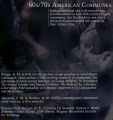

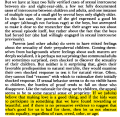

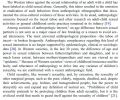




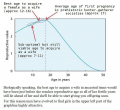




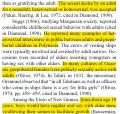
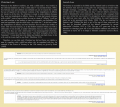
![Rind on historical pederasty throughout the world[5]](/wiki/images/thumb/Historical-Cultural-PederastyRind.jpg/120px-Historical-Cultural-PederastyRind.jpg)









